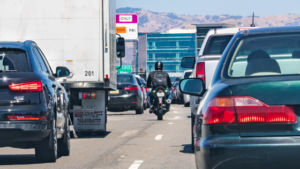
Staying Safe With Utah’s New Motorcycle Law
If you’re a motorcyclist, you may already be familiar with the term lane splitting, which refers to a lane sharing maneuver. Only two states have legislation that allows motorcyclists to

If you’re a motorcyclist, you may already be familiar with the term lane splitting, which refers to a lane sharing maneuver. Only two states have legislation that allows motorcyclists to
UTAH INJURY LAWYERS
Flickinger • Boulton
• Robson • Weeks
PROVO OFFICE
3000 N University Ave
Suite 300
Provo, UT 84604
SOUTH JORDAN OFFICE
10393 S. Temple Dr.
Suite 103
South Jordan, Utah 84095
OFFICE HOURS
Monday- Friday: 8AM-5PM
Saturday-Sunday: Closed
*Disclaimer: the information provided by this website is for informational purposes only and should not be considered legal advice or a substitute for competent legal counsel.
**SMS consent and contact phone numbers will not be shared or sold to third parties or their affiliates for any purpose.
© 2025 All Rights Reserved.